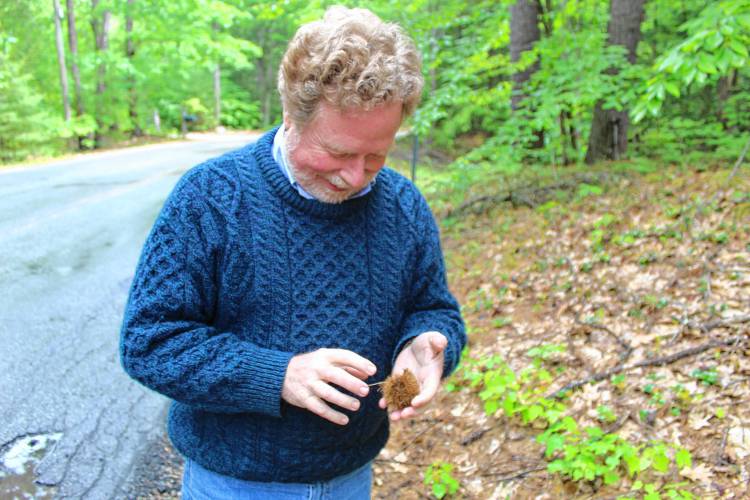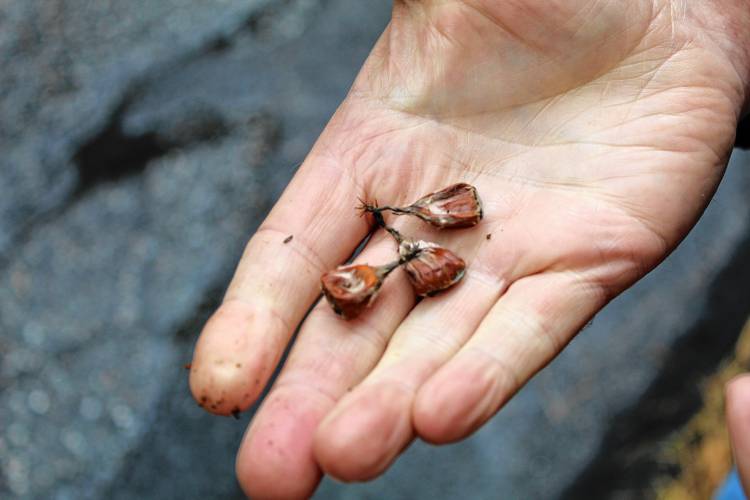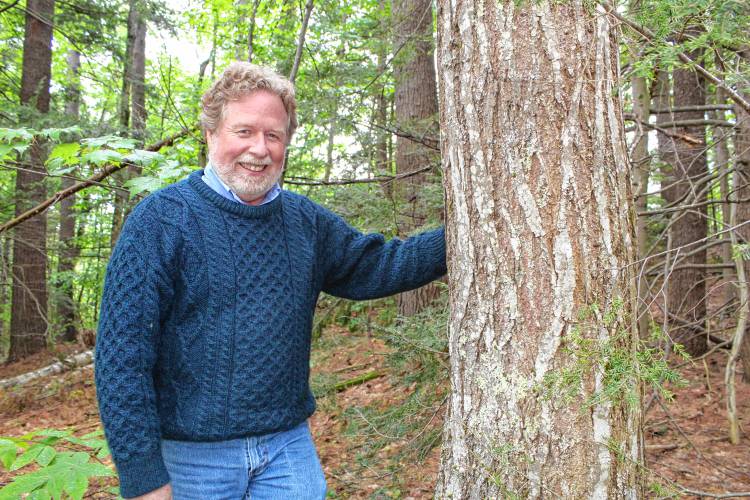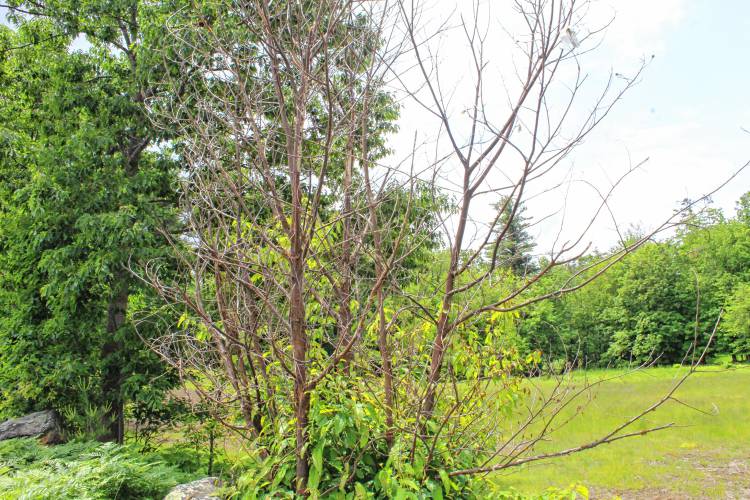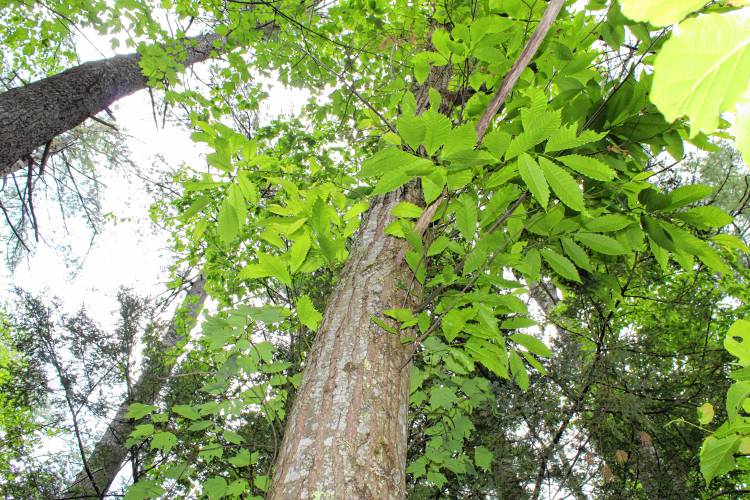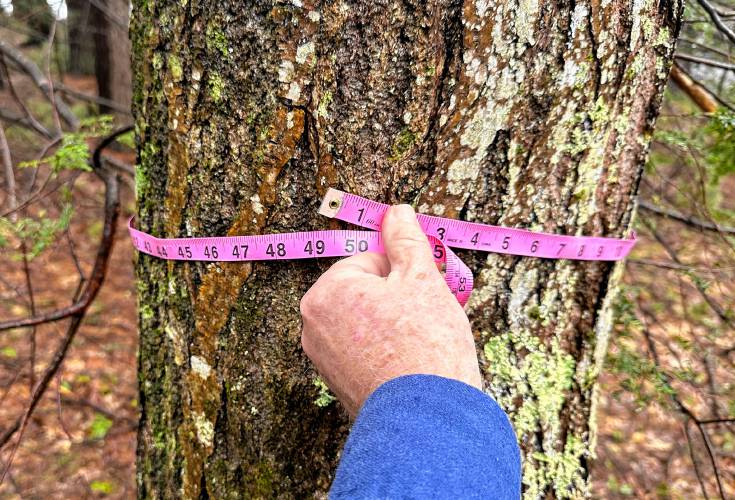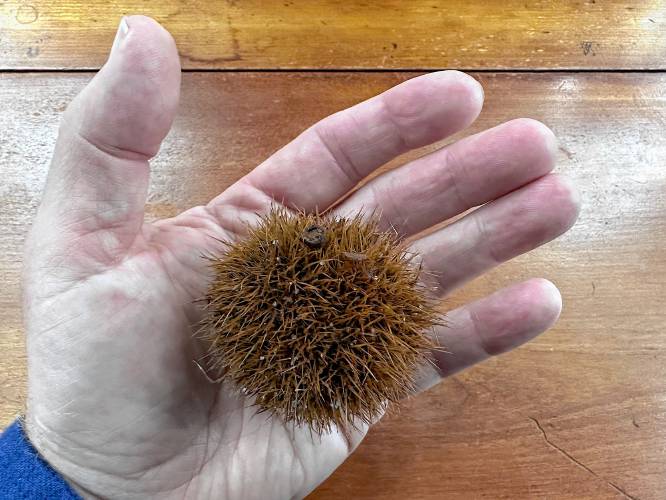American chestnut, once the main wood tree in New England, is threatened by fungus
| Published: 06-28-2023 12:02 PM |
Temple Conservation Commission member Scott Hecker was walking the roads near his home, picking up trash for Temple’s Good Roads Day, when he spotted prickly brown chestnut burrs, all over the side of the road.
Immediately, he knew the significance.
Chestnut trees that have grown old enough and are healthy enough to provide fruit are becoming vanishingly rare, thanks to a fungus, Cryphonectria parasitica, brought to the United States with Chinese chestnut trees that is wiping out the American chestnut population.
“The American chestnut was once the most-important tree for wood in New England. It was a keystone tree,” Hecker said. “They grow extremely fast and produced perfect lumber.”
That wood was often used for planks, as the tree produced straight, rot-resistant wood. American chestnuts were also a notable food source for both people, who roasted the nuts, and wildlife.
The fungus was first identified in the United States in New York in 1904, and by the 1950s, it was widespread, killing chestnut trees by the million.
The fungus attacks the tree, killing it down to the root. The tree can grow back from the root, but after a few years, it usually recatches the blight and dies back again. Hecker said it’s unusual to come across a tree as large and as old as the one he found, so he contacted the American Chestnut Foundation, which works to identify healthy trees to try to bolster the American Chestnut population with breeding programs.
Chris Leask of Mason, a member of the tree-finding committee for the New Hampshire and Vermont chapters of the American Chestnut Foundation, said that while the tree Hecker found is much older than most chestnuts in the area – maybe 25 to 30 years old, based on its trunk circumference – meaning it must have escaped the blight for a long time, it is now showing sings of the fungus.
Article continues after...
Yesterday's Most Read Articles
 ‘Dork Dancing’ coming to Depot Square in Peterborough
‘Dork Dancing’ coming to Depot Square in Peterborough
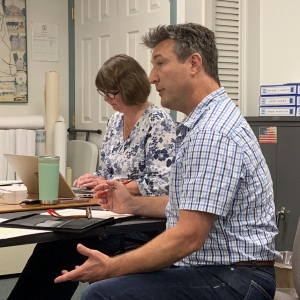 Sixteen-unit development draws ire from neighbors in Jaffrey
Sixteen-unit development draws ire from neighbors in Jaffrey
 Tour de Francestown has a new twist
Tour de Francestown has a new twist
 ConVal officials propose one athletic director position
ConVal officials propose one athletic director position
 Katalina Davis dazzles in Mascenic shutout win
Katalina Davis dazzles in Mascenic shutout win
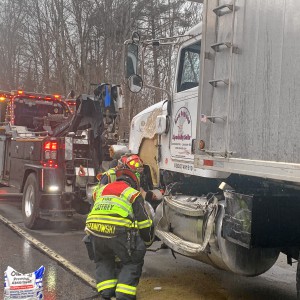 UPDATE: Drivers identified in Jaffrey dump truck crash
UPDATE: Drivers identified in Jaffrey dump truck crash
Leask said the American Chestnut Foundation is working on several avenues to bring back the once-common tree. One of those methods is cross-breeding the American chestnut with the Chinese chestnut, which is resistant to the blight. The other is using genetic modification to develop a pure American chestnut that’s resistant on its own. A third is to locate and breed existing trees in the wild that have developed resistance.
Leask said mature American chestnuts were once so common that when the railroad ran through Mason, it used to bring tourists who would come to gather chestnuts.
Now, the vast majority of American chestnuts are less than an inch in diameter, and there hasn’t been a lumber trade for chestnut wood in decades, despite its former prevalence in the market. The bulk of the annual nut crop comes from European or Asian chestnut species, or from imports.
They’re still a fairly common site on roadsides, where there is enough sunlight for them to thrive, Leask said, pointing out a half-dozen within his sightline along Batchelder Road in Mason, where he lives. But all are small, young trees, signaling they’re bouncing back from a blight die-off, and will likely only go a few years before catching it again and dying again.
“We could go through Mason, and I could show you where 200 chestnut trees were that are just sprouts now,” Leask said.
On his own property, Leask has several chestnut trees, including one that is about 6 years old and approaching 30 feet tall. It now shows the distinctive red spots that signify that it has caught the blight and is not likely to reach maturity to produce flowers.
Residents who have mature, flowering chestnuts on their property, or know the location of one, are encouraged to contact the American Chestnut Foundation through their tree-location form at acf.org/identification, or by contacting Leask at jcleask@msn.com.
Ashley Saari can be reached at 603-924-7172, Ext. 244 or asaari@ledgertranscript.com. She’s on Twitter @AshleySaariMLT.

